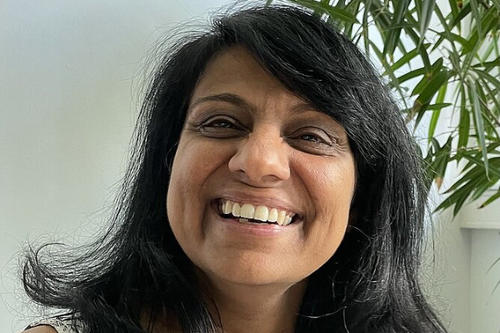Research Group Sharma
Theoretical Solid State Physics
Prof. Dr. Sangeeta Sharma
Joint professorship with the Max Born Institute
14195 Berlin
Within our research group, we focus on investigating the electronic structure of matter in the solid state with a particular focus on superconductivity, magnetism, and the fundamental physics of light-matter interaction. Our approach involves first-principles methodologies, predominantly time-dependent density functional theory, but also density matrix functional theory, as well as tight-binding and simple physical models that, taken together, provide rich insight into the phenomena of "electrons in solids".
Over the last decade we have played a leading role in the theoretical development of the first principles treatment of the light-matter interactions in solid state. The fully ab-initio description of laser pumped magnetic systems both answered long standing questions in the field of femtomagnetism – such as the origin of early time laser induced demagnetization – as well as leading to the successful prediction of fundamental new light-matter phenomena, such as inter-site spin transfer (OISTR), the fastest possible control over magnetic order by light, and femto-phono-magnetism, the femtosecond time scale non-adiabatic coupling and control of magnetism by light and induced lattice excitations. The OISTR effect was subsequently confirmed in experiments and has initiated widespread experimental and theoretical activity in field of early time spin dynamics, shifting the focus from laser induced demagnetization to control over local magnetic order by light.
These developments have utilized “Elk", one of the most accurate electronic structure codes in the theoretical solid state community, and one of the central activities of our group consists of development of this code. Within Elk we established several other ground-breaking techniques including the first ab-initio method for determining transient spectroscopy early time light-matter control over topological currents in two dimensional (2d) materials using complementary model and tight-binding approaches, as well as created the first functional theories capable of treating strong correlations in solids using density matrices, and accurately capturing the excitonic physics of both semiconductors and complex organic materials.
The beauty of the ab-initio approach is that it allows both interpretation of experiment as well as the theoretical prediction of unexpected effects, ideal for pioneering, collaboratively with experiment, emerging fields of solid state physics. Our overall goal is to lead sustained innovation in unraveling the rich and as yet undiscovered physics of non-equilibrium light-matter interaction in solids. At present many outstanding problems and phenomena reside well beyond the realm of the ab-initio treatment of light-matter interaction. These include, but are not limited to: consistent treatment of free carriers and excitons in non-equilibrium pump-probe conditions; spin current generation and spin-switching induced by it; modeling of early time quantum decoherence; the treatment of strong correlation and the coupling of diverse quasi-particles under pump-probe conditions; and going from microscopic physics to actual devices. Future and ongoing work in our group aims to develop ab-initio theory for these rich areas of the non-equilibrium physics of solids, with the ultimate goal of enabling the next generation of energy and resource efficient information devices.
Read more about Prof. Sharma's research
.
